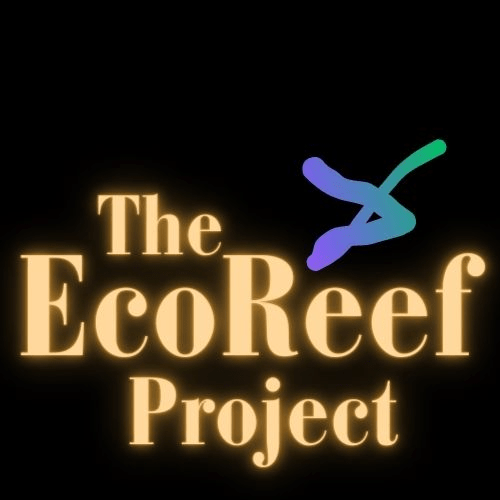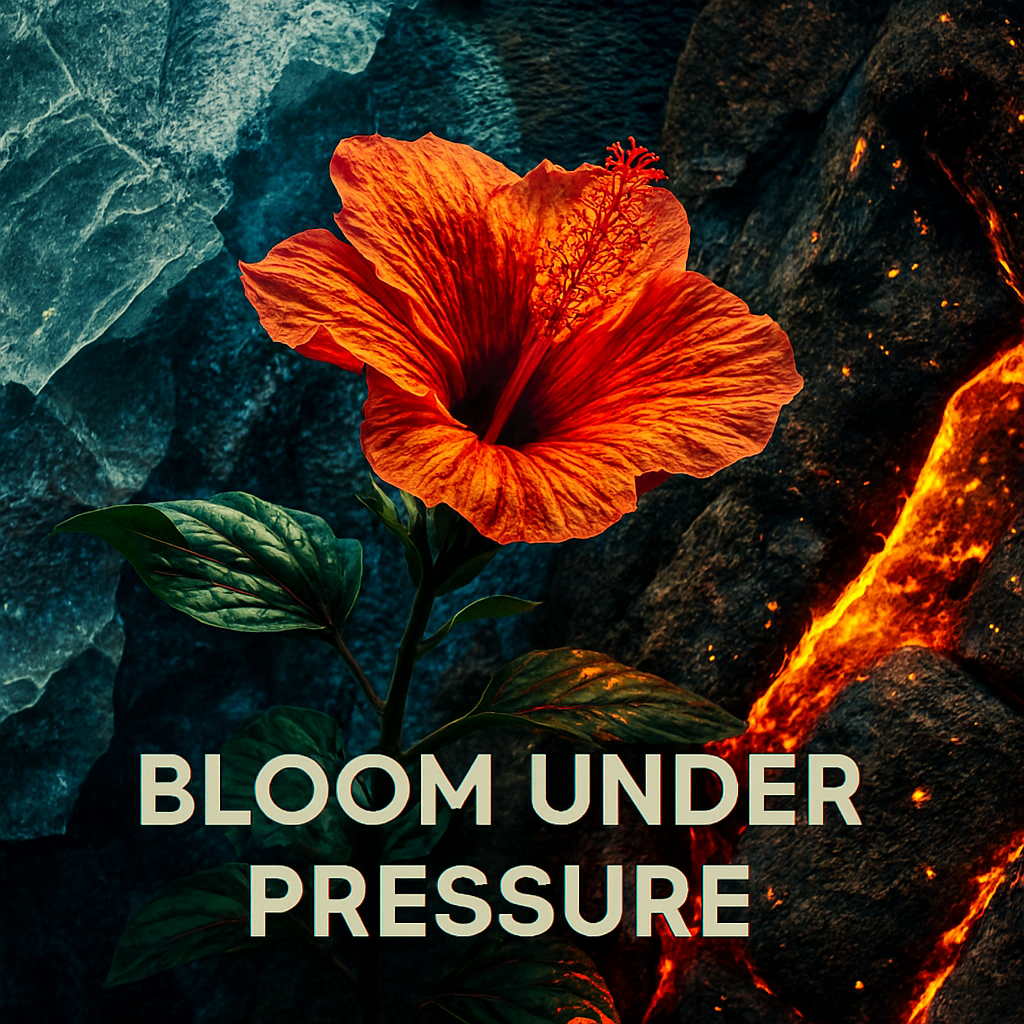Transforming Waste For Better Oceans
Waterways Guardians
EcoReefs represent a groundbreaking environmental innovation that transforms discarded waste into thriving underwater ecosystems. These structures mimic the natural functions of coral reefs, offering safe havens for marine life while simultaneously cleaning waterways and becoming Waterways Guardians. By integrating recycled materials into their design, EcoReefs address the global plastic crisis and provide a sustainable solution for coastal protection. Their role extends beyond habitat creation, as they actively filter debris, trap pollutants, and restore ecological balance.
This initiative demonstrates how environmental engineering can merge creativity with ecological stewardship. The EcoReef Project exemplifies resilience, turning challenges into opportunities for marine conservation. Through community involvement and scientific research, EcoReefs are positioned as guardians of oceans and waterways. Their impact resonates across biodiversity, waste management, and climate adaptation.
EcoReefs As Marine Havens
EcoReefs replicate the protective qualities of coral reefs, offering refuge for fish, crustaceans, and mollusks. These structures encourage breeding and shelter, ensuring species survival in degraded environments. By mimicking natural reef architecture, they create complex habitats that support biodiversity. EcoReefs also stabilize sediment, reducing erosion along fragile coastlines. Their presence enhances food chains, supporting both small organisms and larger predators. This ecological balance strengthens fisheries and sustains local communities. Eco Reefs are particularly valuable in regions where coral reefs have been damaged by climate change. They act as transitional ecosystems, bridging gaps in marine resilience. Their adaptability allows them to thrive in diverse aquatic conditions. Ultimately, EcoReefs serve as living sanctuaries that restore ecological harmony.
| Feature | Function | Benefit |
|---|---|---|
| Shelter | Provides refuge for marine species | Enhances biodiversity |
| Breeding Grounds | Supports fish reproduction | Strengthens food chains |
| Sediment Stabilization | Reduces erosion | Protects coastlines |
| Habitat Complexity | Mimics coral structures | Encourages ecological balance |
| Adaptability | Thrives in varied waters | Expands conservation reach |
Waste Transformation Into EcoReefs
Discarded plastics, ropes, and fishing nets are repurposed into temporary EcoReef structures with results that last. This process reduces ocean pollution while creating functional habitats. By upcycling waste, EcoReefs address two environmental challenges simultaneously. They prevent plastics from entering landfills and waterways. The transformation process involves cleaning, reshaping, and reinforcing materials. Engineers may help design EcoReefs to withstand currents and storms. This durability ensures long-term ecological benefits. Waste transformation also educates communities about circular economies. It demonstrates how discarded items can gain new life in conservation. EcoReefs thus embody innovation through waste-to-resource conversion.
- Repurposed fishing nets become structural frameworks
- Plastic bottles are reshaped into modular reef blocks
- Ghost gear is cleaned and integrated into reef bases
- Waste reduction aligns with circular economy principles
- Durable designs resist harsh marine conditions
- Upcycling prevents landfill overflow
- Communities learn sustainable practices
- Transformation reduces microplastic spread
- EcoReefs showcase engineering creativity
- Waste becomes ecological opportunity
EcoReefs And Waterway Cleanup
EcoReefs actively filter water, trapping debris and pollutants. Their porous structures capture floating waste, improving water clarity. This filtration process enhances aquatic health and supports biodiversity. By removing contaminants, EcoReefs reduce risks to marine organisms. They also mitigate harmful algal blooms by stabilizing ecosystems. Waterway cleanup through EcoReefs benefits both wildlife and humans. Cleaner waters support tourism and fisheries. EcoReefs thus contribute to economic resilience alongside ecological restoration. Their dual role as habitat and filter makes them unique guardians. This integration of cleanup and conservation defines their transformative impact.
| Cleanup Function | Environmental Impact | Human Benefit |
|---|---|---|
| Debris Trapping | Reduces pollution | Improves tourism appeal |
| Water Filtration | Enhances clarity | Supports fisheries |
| Contaminant Removal | Protects marine species | Safeguards food chains |
| Algal Bloom Control | Stabilizes ecosystems | Prevents health risks |
| Dual Role | Habitat plus filter | Strengthens resilience |
EcoReefs As Plastic Problem Solvers
Plastic pollution is one of the greatest threats to oceans. EcoReefs directly address this pollution crisis by integrating recycled plastics into their design for temporary use and if strutured more long term. This reduces reliance on landfills and curbs ocean contamination. By transforming waste into habitat, EcoReefs redefine plastic’s role. They shift perception from pollutant to resource. This innovation demonstrates how engineering can solve ecological challenges. EcoReefs also inspire broader waste management strategies. Their success encourages industries to adopt circular practices. Plastic problem solving through EcoReefs is scalable and replicable. It represents a model for global environmental stewardship.
- Plastics become structural reef components
- Landfill reliance decreases significantly
- Ocean contamination is reduced
- Waste perception shifts toward resource value
- Engineering solutions combat ecological crises
- Industries adopt circular economy models
- EcoReefs inspire scalable strategies
- Communities engage in plastic reduction
- Innovation redefines sustainability
- Global stewardship gains momentum
EcoReefs And Mangrove Protection
EcoReefs complement mangrove ecosystems by stabilizing coastal zones. They reduce wave energy, protecting fragile mangrove roots. This synergy enhances resilience against storms and erosion. Mangroves benefit from cleaner waters provided by EcoReefs. Together, they form integrated coastal defense systems. EcoReefs also expand biodiversity within mangrove regions. Fish and crustaceans thrive in these dual habitats. This partnership strengthens ecological networks. Mangrove protection through EcoReefs exemplifies holistic conservation. It demonstrates how engineered and natural systems can coexist.
| Synergy | Effect | Outcome |
|---|---|---|
| Wave Reduction | Protects mangrove roots | Enhances resilience |
| Water Filtration | Improves mangrove health | Expands biodiversity |
| Dual Habitat | Supports marine species | Strengthens networks |
| Coastal Defense | Combines natural and engineered systems | Prevents erosion |
| Holistic Conservation | Integrates ecosystems | Promotes coexistence |
EcoReefs And Community Engagement
EcoReefs thrive when communities participate in their creation and maintenance. Local involvement fosters ownership and stewardship. Educational programs teach residents about waste transformation. Community engagement strengthens conservation awareness. EcoReefs also provide opportunities for citizen science. Volunteers monitor biodiversity and water quality. This data supports ongoing research and adaptation. Engagement builds resilience through shared responsibility. Communities benefit economically from tourism and fisheries. EcoReefs thus unite ecological and social dimensions.
- Local participation fosters stewardship
- Education promotes waste awareness
- Citizen science enhances monitoring
- Shared responsibility builds resilience
- Tourism benefits communities
- Fisheries gain sustainability
- Engagement strengthens conservation culture
- Volunteers contribute valuable data
- Awareness spreads across generations
- EcoReefs unite ecology and society

EcoReefs And Climate Adaptation
EcoReefs help coastal regions adapt to climate change. They reduce storm surge impacts by stabilizing waters. Their structures withstand extreme conditions, offering resilience. EcoReefs also mitigate rising sea levels by protecting coastlines. They support biodiversity, which strengthens ecological adaptation. Climate adaptation through EcoReefs is both practical and symbolic. It demonstrates proactive environmental engineering. EcoReefs provide hope in the face of global challenges. Their role in adaptation extends beyond immediate benefits. They represent long-term resilience strategies.
| Adaptation Role | Climate Benefit | Ecological Impact |
|---|---|---|
| Storm Surge Reduction | Minimizes damage | Protects communities |
| Structural Resilience | Withstands extremes | Ensures longevity |
| Sea Level Mitigation | Safeguards coastlines | Preserves habitats |
| Biodiversity Support | Strengthens adaptation | Expands resilience |
| Symbolic Role | Inspires action | Promotes stewardship |
EcoReefs And Fisheries Sustainability
EcoReefs enhance fisheries by supporting breeding grounds. They provide habitats for juvenile fish, ensuring population growth. Sustainable fisheries depend on healthy ecosystems. EcoReefs restore balance, reducing overfishing pressures. Their presence increases fish stocks for local communities. Fisheries benefit economically from EcoReef integration. EcoReefs also diversify species availability. This strengthens food security and livelihoods. Fisheries sustainability through EcoReefs is measurable and impactful. It aligns ecological health with human prosperity.
- Breeding grounds support fish populations
- Juvenile habitats ensure growth
- Ecosystem balance reduces overfishing
- Fish stocks increase sustainably
- Communities gain economic benefits
- Species diversity expands availability
- Food security strengthens resilience
- Livelihoods improve through fisheries
- Sustainability aligns ecology and economy
- EcoReefs restore fisheries balance
EcoReefs And Scientific Research
EcoReefs provide platforms for marine research. Scientists study biodiversity within these structures. Data collected informs conservation strategies. EcoReefs also support experiments on waste transformation. Their adaptability offers insights into ecological engineering. Research enhances understanding of marine resilience. EcoReefs contribute to global knowledge networks. They inspire innovation in environmental science. Scientific research validates EcoReef effectiveness. It ensures credibility and scalability.
| Research Focus | Insight | Application |
|---|---|---|
| Biodiversity Studies | Species monitoring | Conservation strategies |
| Waste Transformation | Engineering insights | Circular economy models |
| Adaptability | Ecological resilience | Climate adaptation |
| Knowledge Networks | Global collaboration | Innovation sharing |
| Validation | Ensures credibility | Supports scalability |
EcoReefs And Educational Outreach
EcoReefs serve as powerful educational tools for schools and universities. They demonstrate how waste can be transformed into ecological assets. Students learn about marine biology through hands-on observation. EcoReefs provide living examples of circular economy principles. Their presence inspires future environmental engineers. Educational outreach builds awareness across generations. EcoReefs also encourage interdisciplinary learning, combining science, engineering, and social studies. Teachers use EcoReefs to illustrate sustainability in action. Outreach programs strengthen community ties to conservation. EcoReefs thus become classrooms beneath the waves.
| Educational Role | Benefit | Audience |
|---|---|---|
| Living Example | Demonstrates sustainability | Students and researchers |
| Circular Economy | Shows waste transformation | Communities |
| Interdisciplinary Learning | Combines multiple fields | Schools and universities |
| Awareness Building | Inspires future generations | Youth |
| Community Ties | Strengthens conservation culture | Local residents |
EcoReefs And Tourism Development
EcoReefs attract divers, snorkelers, and eco-tourists. Their vibrant habitats provide unique underwater experiences. Tourism generates income for coastal communities. EcoReefs enhance destinations by offering sustainable attractions. They also promote environmental awareness among visitors. Tourism development through EcoReefs supports conservation funding. Local businesses benefit from increased activity. EcoReefs thus merge ecology with economic opportunity. Sustainable tourism ensures long-term community prosperity. EcoReefs redefine travel as conservation-driven exploration.
- EcoReefs attract divers and snorkelers
- Tourism generates community income
- Sustainable attractions enhance destinations
- Visitors gain environmental awareness
- Conservation funding increases through tourism
- Local businesses benefit economically
- EcoReefs merge ecology with opportunity
- Travel becomes conservation-driven
- Prosperity aligns with sustainability
- Tourism strengthens community resilience
EcoReefs And Engineering Innovation
EcoReefs showcase the creativity of environmental engineering. Their design integrates recycled materials into durable structures. Engineers test resilience against currents and storms. Innovation ensures EcoReefs remain functional for decades. Modular designs allow easy expansion and adaptation. Engineering innovation also reduces construction costs. EcoReefs highlight how science can solve ecological crises. Their success inspires new approaches to waste management. Engineers collaborate with ecologists for holistic solutions. EcoReefs thus represent engineering excellence in conservation.
| Innovation Aspect | Function | Impact |
|---|---|---|
| Recycled Materials | Structural durability | Reduces waste |
| Resilience Testing | Withstands currents | Ensures longevity |
| Modular Design | Allows expansion | Adapts to ecosystems |
| Cost Reduction | Efficient construction | Improves scalability |
| Collaboration | Engineers and ecologists | Holistic solutions |

EcoReefs And Policy Integration
EcoReefs influence environmental policy by demonstrating practical solutions. Governments adopt EcoReefs as part of coastal defense strategies. Policies encourage waste transformation into ecological assets. EcoReefs provide evidence for sustainable legislation. Their success strengthens marine protection laws. Policy integration ensures long-term conservation funding. EcoReefs also align with international climate agreements. They serve as models for global cooperation. Policy makers recognize EcoReefs as scalable solutions. Integration bridges science and governance effectively.
- Governments adopt EcoReefs in defense strategies
- Policies encourage waste transformation
- Evidence supports sustainable legislation
- Marine protection laws gain strength
- Conservation funding becomes secure
- EcoReefs align with climate agreements
- Models inspire global cooperation
- Policy makers recognize scalability
- Integration bridges science and governance
- EcoReefs influence environmental frameworks
EcoReefs And Cultural Symbolism
EcoReefs embody cultural values of stewardship and resilience. They symbolize humanity’s ability to transform waste into life. Communities view EcoReefs as guardians of oceans. Their presence inspires art, storytelling, and cultural rituals. EcoReefs become symbols of ecological hope. They represent harmony between technology and nature. Cultural symbolism strengthens emotional connections to conservation. EcoReefs also highlight intergenerational responsibility. Their role transcends science, entering cultural narratives. EcoReefs thus resonate as icons of sustainability.
| Symbolic Role | Meaning | Cultural Impact |
|---|---|---|
| Stewardship | Guardianship of oceans | Inspires rituals |
| Transformation | Waste into life | Encourages art |
| Hope | Ecological resilience | Strengthens narratives |
| Harmony | Technology with nature | Builds emotional ties |
| Responsibility | Intergenerational duty | Promotes legacy |
EcoReefs And Economic Resilience
EcoReefs contribute to economic resilience by supporting fisheries and tourism. Their presence stabilizes livelihoods in coastal communities. Waste transformation reduces disposal costs. EcoReefs create jobs in construction and monitoring. Economic resilience aligns with ecological sustainability. Communities benefit from diversified income sources. EcoReefs also attract investment in green technologies. Their success demonstrates profitability in conservation. Economic resilience ensures long-term community prosperity. EcoReefs thus merge ecology with economics seamlessly.
- Fisheries gain stability
- Tourism generates income
- Waste disposal costs decrease
- Jobs emerge in construction and monitoring
- Sustainability aligns with economics
- Communities diversify income sources
- Green technology investment increases
- Conservation demonstrates profitability
- Prosperity becomes long-term
- Ecology merges with economics
EcoReefs And Global Replication
EcoReefs are scalable across diverse regions. Their modular design allows replication worldwide. Countries adopt EcoReefs to address local challenges. Global replication strengthens international conservation networks. EcoReefs adapt to varied aquatic conditions. Their success inspires cross-border collaboration. Replication demonstrates universality of ecological solutions. EcoReefs become global guardians of waterways. Their spread amplifies environmental impact. Replication ensures worldwide ecological resilience.
| Replication Aspect | Benefit | Global Impact |
|---|---|---|
| Scalability | Modular design | Worldwide adoption |
| Adaptability | Thrives in varied waters | Expands reach |
| Collaboration | Cross-border projects | Strengthens networks |
| Universality | Applies to diverse challenges | Demonstrates solutions |
| Amplification | Spreads success | Ensures resilience |
EcoReefs And Future Innovation
EcoReefs inspire future innovations in environmental engineering. Their success encourages new waste-to-resource projects. Future designs may integrate advanced filtration systems. Innovations could include renewable energy integration. EcoReefs pave the way for hybrid ecological structures. Their adaptability fosters continuous improvement. Future innovation ensures long-term relevance. EcoReefs become catalysts for creative sustainability. Their role extends into technological evolution. Innovation keeps EcoReefs at the forefront of conservation.
- Success inspires new projects
- Advanced filtration systems may emerge
- Renewable energy integration possible
- Hybrid ecological structures envisioned
- Adaptability fosters improvement
- Long-term relevance ensured
- Catalysts for sustainability created
- Role extends into evolution
- Innovation drives conservation forward
- EcoReefs remain at forefront
EcoReefs And Ocean Guardianship
EcoReefs embody guardianship of oceans and waterways. They protect biodiversity while cleaning aquatic environments. Guardianship reflects responsibility for ecological balance. EcoReefs symbolize proactive stewardship. Their presence reassures communities of ecological resilience. Guardianship extends across generations. EcoReefs inspire collective responsibility. They demonstrate how innovation safeguards nature. Guardianship through EcoReefs is both practical and symbolic. EcoReefs thus stand as sentinels of sustainability.
| Guardianship Role | Function | Impact |
|---|---|---|
| Biodiversity Protection | Safeguards species | Strengthens ecosystems |
| Waterway Cleanup | Removes pollutants | Improves health |
| Stewardship | Demonstrates responsibility | Inspires communities |
| Resilience Assurance | Provides stability | Builds trust |
| Symbolic Sentinel | Represents sustainability | Promotes legacy |











Leave a Reply